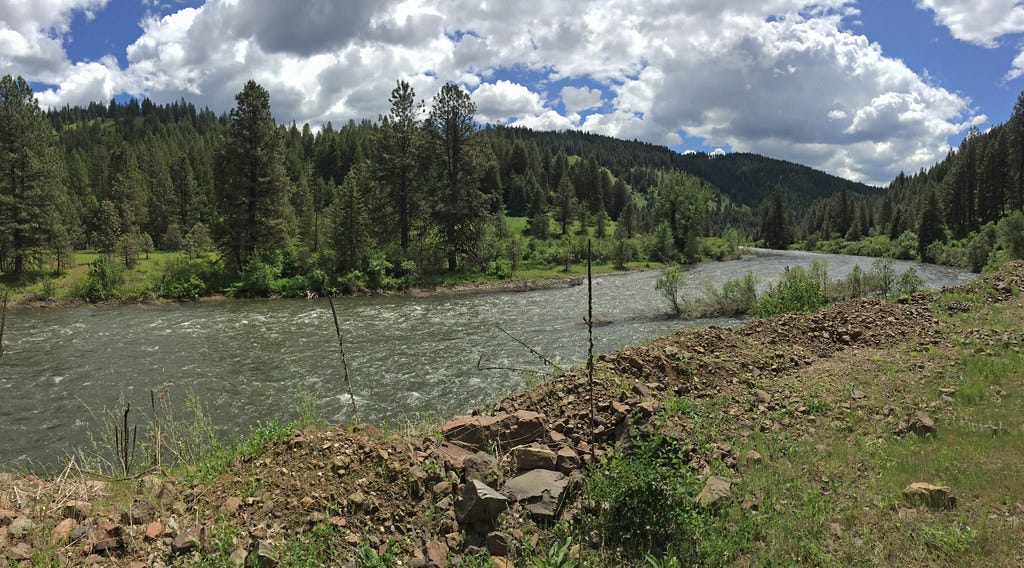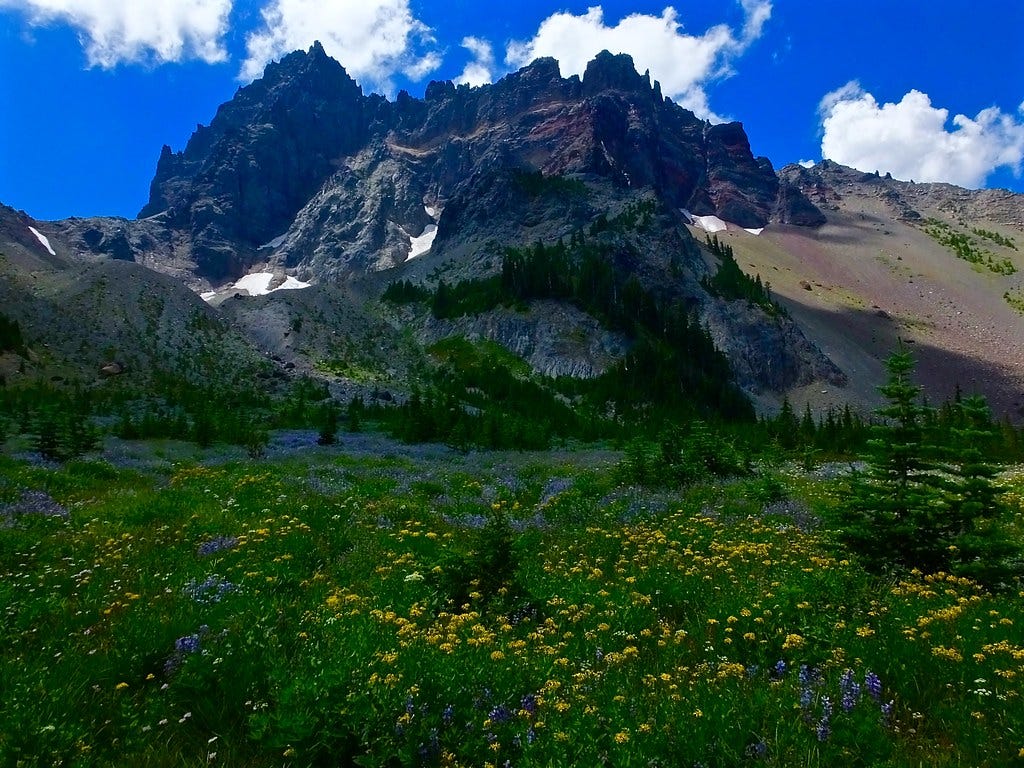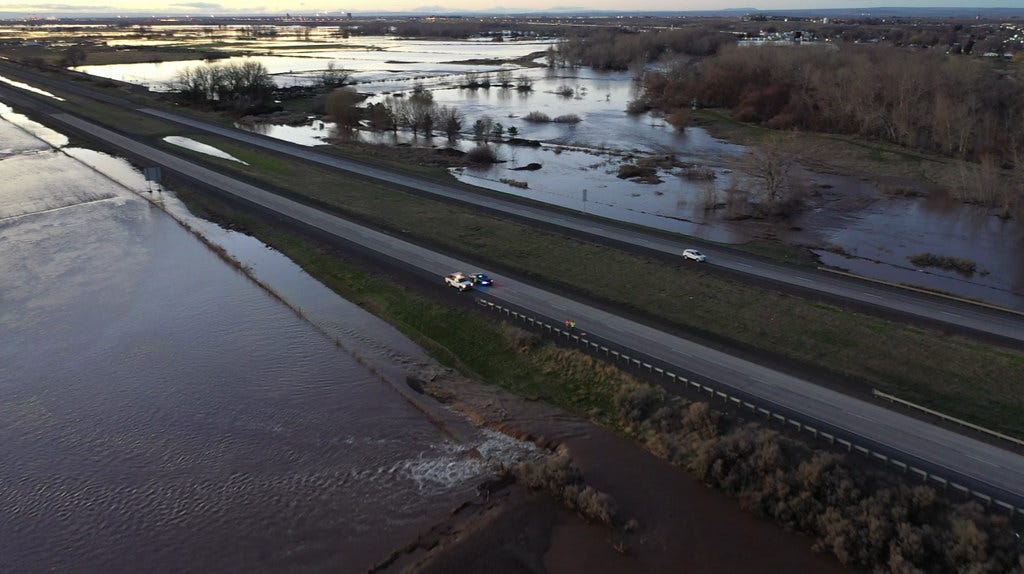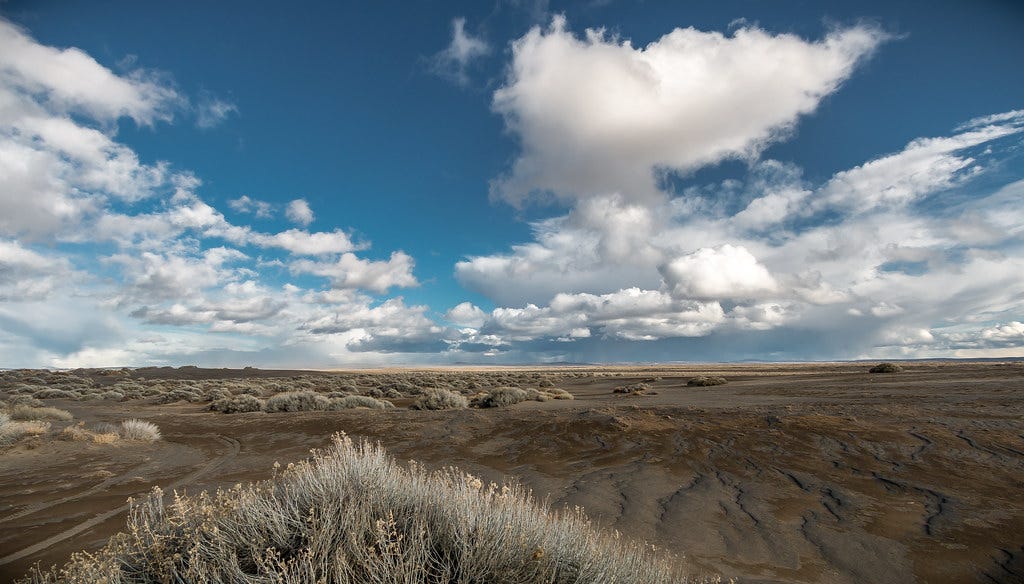Christina deVillier: This is our future and we can still choose: Nature's climate solutions
Let’s slow down, feel our feet on the ground, and recommit to the resilience and abundance of our lands, waters, and ecosystems, including the soil ecosystems of our working landscapes.
Christina deVillier is a writer, a gardener, and a fourth-generation explorer of northeast Oregon's mountains, canyons, and communities.
THIS IS OUR FUTURE AND WE CAN STILL CHOOSE: NATURE’S CLIMATE SOLUTIONS

"Grande Ronde Wild and Scenic River" by BLM Oregon & Washington is licensed under CC BY 2.0
I took my mom backpacking for her sixtieth birthday. We wanted to go, and the weather was perfect, but we should have heeded the forecast. We hiked nine miles over a pass to a lake. On day two, the smoke rolled in, drifting down the ridges and saturating the air in our little valley until, by 2pm, we couldn’t see the mountains anymore. I should tell you that my mom is suffering from a chronic lung infection. She’s in the category of “sensitive people.” We assessed and decided it would likely be worse to stay in the smoke than to get back on the trail in the smoke and get home. We slogged back over the pass, descended mile after mile in the thickening haze, and arrived at our car in the dark, nauseous and exhausted. I bet you can imagine how guilty I felt, how worried.
When we’re distressed, many of us scramble for solutions. The timber industry, which is a powerful force in Oregon politics, has spent years building a narrative that more logging (“fuels treatment”) will save us from wildfire. But this is an oversimplified answer to a complex problem. Fires ignite and spread differently in different ecosystems, and the increases in fire severity and frequency we’ve seen over the past decade have occurred in the context of severe droughts, longer fire seasons, high winds, and other fire-weather factors. Often—including in these most recent Oregon fires—wildfires consume both treated and untreated forests when the fire weather is hot.
The fire weather, in other words, is a big part of the problem. And, most of the dangerous changes we are seeing in fire weather have one common culprit: climate change, manifesting in our neck of the woods in longer fire seasons, droughts, and erratic winds and storms. In this recent spate of tragic fires in Oregon, an unusual easterly wind on top of drought conditions drove ravenous, dangerous fire behavior.
My heart goes out to those who’ve lost homes, loved ones, and livelihoods in these fires. It’s been horrible. All of us are struggling with the smoke and the damage and the full suite of heavy emotions in a year that was hard enough already. As we collect ourselves and pivot into action mode, let’s reach for solutions that respect the complexity of the problem. Let’s invite an innovative, generous and adaptive response to the root problem of climate change. As we work together to address climate change in Oregon, let’s honor our state’s legacy of green innovation and invest in climate solutions that also protect our natural heritage and reflect our pride in wildlands and thriving ecosystems. The most effective, most affordable climate solutions are “technologies” that nature has already developed.
NATURE’S CLIMATE SOLUTIONS: MITIGATION

"Three Fingered Jack, Canyon Creek Meadows" by J K Amero is licensed under CC BY-NC-SA 2.0
We have amazing opportunities, here in Oregon, to help solve the climate crisis. Trees and soils store carbon, so when we protect forests and grasslands, or lengthen the interval between disturbances like logging and tilling, we’re protecting giant structures that pull heat-trapping pollutants out of the air for us, for free.
Big trees are doing the majority of the above-ground climate mitigation work in our landscapes right now—in fact, half of all above-ground carbon in forests is stored in the largest 1% of trees. That’s why the U.S. Forest Service’s current push to change a 1994 rule that protects large trees across more than 9 million acres in the east-side forests of Oregon and Washington is coming at exactly the wrong time. Large trees, and the deep and complex soils they help to build and hold, are doing the carbon storage heavy lifting in our forests. Logging them would destroy much of our region’s climate mitigation capacity. We should be doing the opposite: we should be finding innovative ways to reward communities for keeping carbon in their forests.
The true superstar of carbon storage is healthy soil. Complex soils full of microorganisms and loaded with organic matter punch way above their weight class in terms of carbon storage, but topsoil in the U.S. is being degraded and lost ten times faster than it can naturally rebuild itself. Regenerative agriculture—farming that holds and builds carbon in the soil and provides other ecological co-benefits—is a lively topic in the climate conversation right now for a good reason: changing our agricultural systems to favor soil-building may be the single best thing we can do to reverse climate change. The government and private markets are both beginning to develop incentives to support farmers in increasing soil carbon. We need to scale up these solutions, and fast. Oregon should lead the way.
NATURE’S CLIMATE SOLUTIONS: ADAPTATION

"OSP and Oregon DOT respond" by OregonDOT is licensed under CC BY 2.0
The climate is changing whether we like it or not, and while we may be able to mitigate the worst effects of climate change if we act quickly, 2020 has also shown us that it’s past time to start prioritizing climate adaptation. What systems must we build and what relationships must we deepen to respond justly and holistically to the impacts we are already beginning to feel?
Global warming is the trend, but local “weirding” is the observed reality, from the polar vortex in the Midwest to freak floods in Umatilla County to uncharacteristic fire weather. Intact ecosystems are our best buffers against local climate instability: healthy forests temper climate extremes in both winter and summer, and thriving wetlands and riparian zones provide clean water and fire refugia.
Water is a major climate concern in Oregon due to changing precipitation patterns (more rain, less snow, longer droughts). Designating more Wild & Scenic rivers in the state, as Senator Wyden is working to do, is one approach to protecting and enhancing the natural systems that deliver water to us as we prepare for an increasingly drought-prone future. Restoration efforts focused on reconnecting floodplains to their rivers benefit fish, wildlife and communities alike. We should also invest time and energy in encouraging our state animal, the American beaver, to recolonize our waterways, especially in public lands headwaters. Beavers are a restoration partner extraordinaire: beaver dam/pond/wetland complexes store water, slow floods and fires, and provide habitat for everything from butterflies to moose to salmon to ducks. These benefits trickle down (literally) to all water users downstream.
THIS IS OUR FUTURE AND WE CAN STILL CHOOSE

"Fossil Lake" by BLM Oregon & Washington is licensed under CC BY 2.0
The whole world has been grappling with fires this year. The current awful fires in Oregon and California are just the most recent iteration of a trend of burning and smoking that has stretched from Australia to the Arctic to the Amazon in 2020. This is our future in a rapidly warming world: a world that hosts ever crazier storms and extremes and is home to nearly eight billion potential igniters (most of these fires, including the wildfires, have been human-caused in one way or another, and climate change is certainly one of the ways we’ve primed the pump for infernos). Even if we stop emitting CO2 right now (and we should absolutely do everything we can to reach net zero emissions as soon as possible), we’ll continue to face the impacts of the carbon that’s already in our air for decades to come. It’s time to get real about that, and getting real means holding each other, and grieving and planning, and uplifting solutions that don’t add to our intertwined ecological burdens. To paraphrase Einstein, we aren’t going to get out of the crisis with the same thinking that got us into it.
As I consider natural climate solutions, in my own context as a rural Oregonian with a conservation job, a personal history of farming, a commitment to my garden, a deep love of place, and a sick mama, I think a lot about slowing down. That’s what I kept saying to my mom on that trail, so she wouldn’t overstress her compromised lungs: slow down, take it easy. That’s one of the demands of the coronavirus: slow down, take a breath (if you can), reevaluate your priorities. The stories and memes of animals and ecosystems taking their own deep breath in the absence of human commotion during lockdown were sometimes overhyped, but the effects of our (partial) withdrawal on our biosphere have been real and measurable. Last year, a think tank in the U.K. came out with a study suggesting that we could solve the climate crisis by simply cutting everyone back to a nine-hour work week: this is simply an acknowledgement that the great expansion and acceleration of human activity is the very thing that’s pushing us ever closer to biosphere collapse. There’s a certain tragic resonance in the fact that American landscapes began to burn as we engaged in the hectic, hasty bungle of re-opening our polluting and top-heavy economy.
Certainly, some of the solutions we must find to the climate crisis will be innovations that contemporary capitalism delivers. But we sometimes overvalue the new and the next and end up in tunnel vision, reproducing “the same thinking,” building new models of the same machines that have driven us so far down this road of climate chaos and extinctions. As Oregonians, let’s commit to a full spectrum of climate responses, including upholding the solutions that already exist all around us, in our mountains, wetlands, waterways and forests. Let’s slow down, feel our feet on the ground, and recommit to the resilience and abundance of our lands, waters, and ecosystems, including the soil ecosystems of our working landscapes. Nature will see us through this if we give her the space and support she needs to thrive.
*****************
Keep the conversation going on our Facebook page: https://www.facebook.com/oregonway



